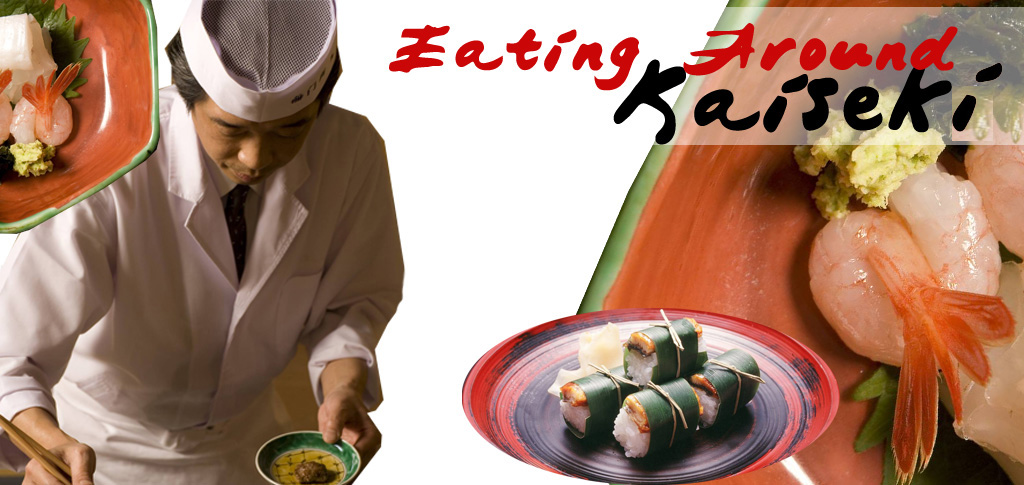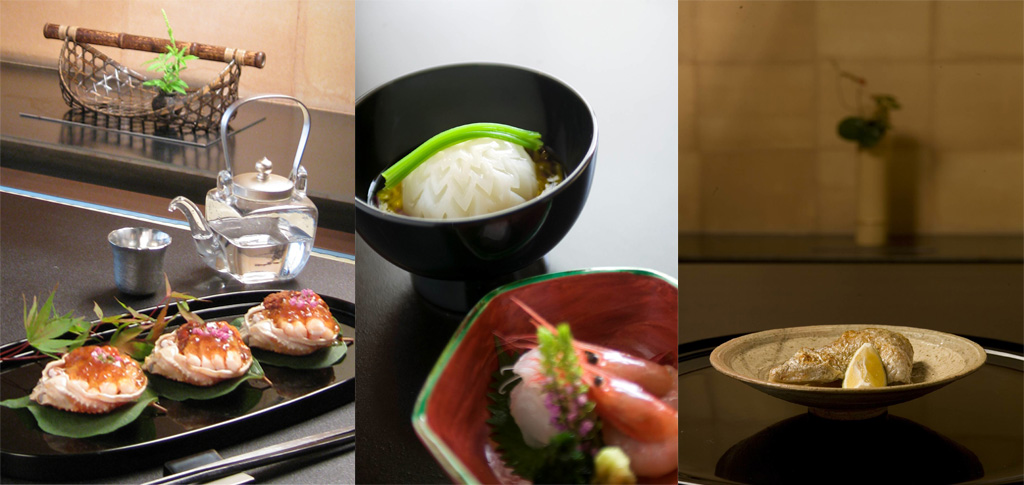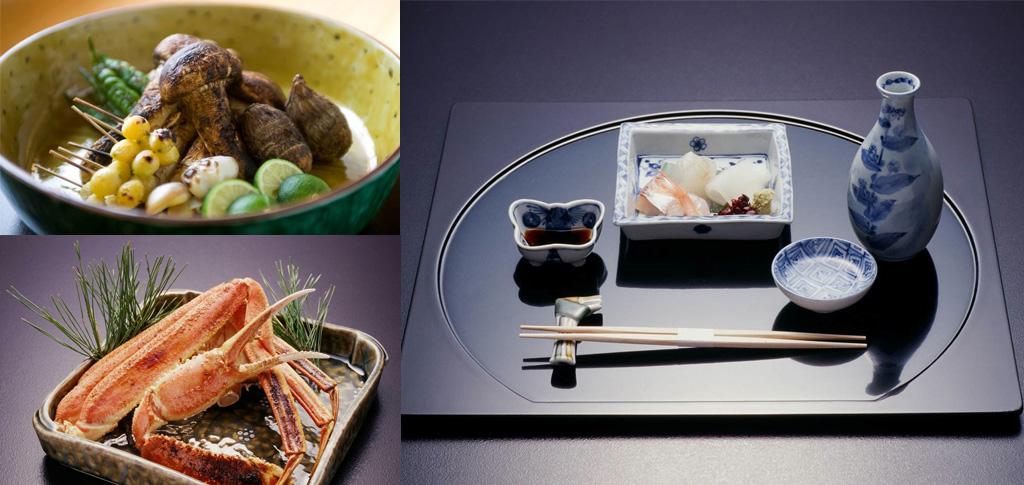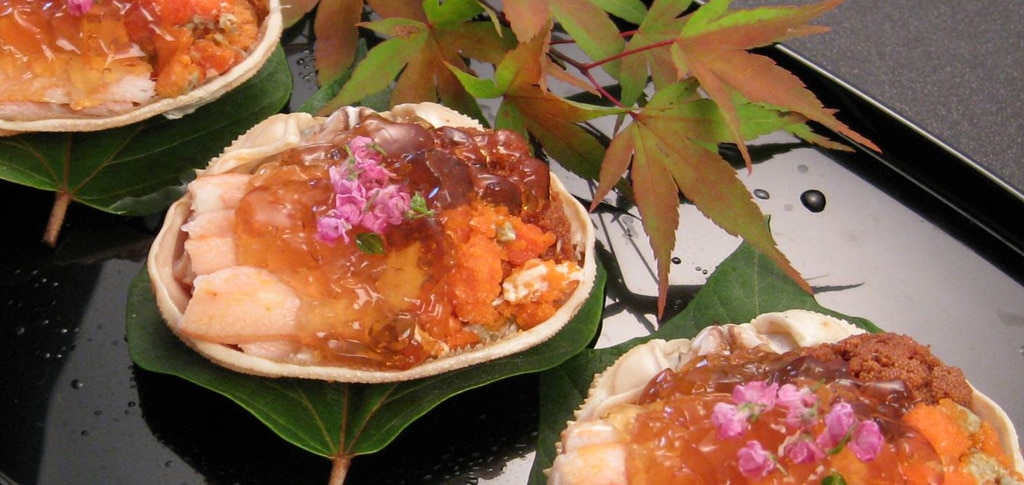
Less is More
You’ve had sushi, tempura, yakitori, and udon, but if you really want to eat like the Japanese, it’s time you tried kaiseki. Kaiseki is a kanji word that means, “stone in the bosom,” and refers to a centuries old practice that the Buddhist monks followed in the winter. They placed hot stones under their robes to ward off the cold. Literally, heartwarming food.
It works like this. Multiple courses of very small amounts of intensely flavored food arrive in succession. The dishes are strictly seasonal and emphasize colors, presentation, texture, and heat. Let’s be honest, Japanese food is based on a gastronomy that is all about purity – a please don’t let the peas touch the carrots on the plate sensibility. Also, the flavor notes are extremely subtle and precise. To achieve the precision, the Japanese latch onto seasonal flavors when they’re at their peak. We’re talking the perfect melon, the perfect tomato, and the perfect hiramasa.

Thai and Indian food rely on seasoning while French food embraces fat. In contrast, Japanese food is about the ephemeral, which is one reason it is the most seasonal cuisine on the planet. The message is on the plate. Life is short.
I was recently invited by Relais & Chateaux and ANA (All Nippon Airways) to visit Japan and explore high-end kaiseki dining. It was my 7th trip there so I knew my way around.

What I discovered is that kaiseki cuisine has morphed from a highly ritualized and contemplative food and service into a way of life. It has become the guiding principle behind Japanese food service. On ANA, for example, small, beautiful plates of fresh fish were followed by little bowls of pickled vegetables. You don’t fill up on one course and feel a growing sense of satisfaction and anticipation. You slow down and appreciate what you’re eating. Here we have BBQ. In Japan, they have thumbnail portions of food.
While in Japan, at Awaji in the Hotel Anaga, an evening meal was formally presented as follows: small bites of extremely delicious mackerel, baby tuna, barracuda, suzuki fish, yuba (tofu skin), hamo eel, cucumbers, and seaweed. Each dish had so much depth that you were satisfied without feeling full and hungry enough for the next course. This is a cuisine that fuels activity rather than dulling the senses and making you want to take a nap. You know how French food can be heavy? Kaiseki food is so light it gives you energy. Small bites of protein, lots of vegetables – it’s practically the original spa cuisine.
The message of kaiseki? Slow down and think and don’t jump to conclusions. It’s dining where you savor tastes that are not always immediate. Further, since kaiseki is so seasonal, you embrace your surroundings. I enjoyed an even more intense kaiseki meal at the Beniya Mukayu ryokan, which is a type of Japanese inn where you do nothing but nap, bathe, and eat, which is my idea of happiness. Here gorgeous mushrooms, mountain vegetables, and an array of fish were served lovingly.
Throughout Japan, in all the high-end restaurants, kaiseki dining is offered to guests seeking to capture the spirit of Japan. Eating kaiseki food is inspiring. Every time I return from Japan, I follow its guidelines when cooking at home. You can take its principles and apply it to any cuisine. For example, I’ll serve five bowls of local vegetables, about a quarter cup in each, rather than two big servings. Emphasis switches as well. Protein is still there, but the vegetables are the stars.
Speaking of stars and vegetables, the latest two star Michelin in New York City is Kajitsu, a kaiseki style restaurant which is 100% vegetarian with spectacular menu items like Matsutake mushroom rice, grilled fennel bulb with marinated sesame tofu, and grilled eggplant with hibiscus leaf. Kajitsu changes the menu monthly. What’s amazing is that kaiseki dining need is not limited to Japanese ingredients or techniques. Kajitsu serves black truffles, for example.
More to the point, other chefs have learned from adopting kaiseki’s standards and approach to dining. The French Laundry is the single most successful U.S. version of Japanese kaisekidining. You can have 18 little courses of precise, seasonal, colorful, textured foods. Now that is the way to make a kaiseki meal seem like Thanksgiving!

www.shrinkinthekitchen.com
ANA http://www.ana.co.jp/asw/wws/us/e/
Hotel Anaga
Beniya Mukayu http://www.relaischateaux.com/spip.php?page=home&lang=en
Kajitsu
414 E. 9th Street, New York, NY 10009, 212-228-4873
www.kajitsu.com

